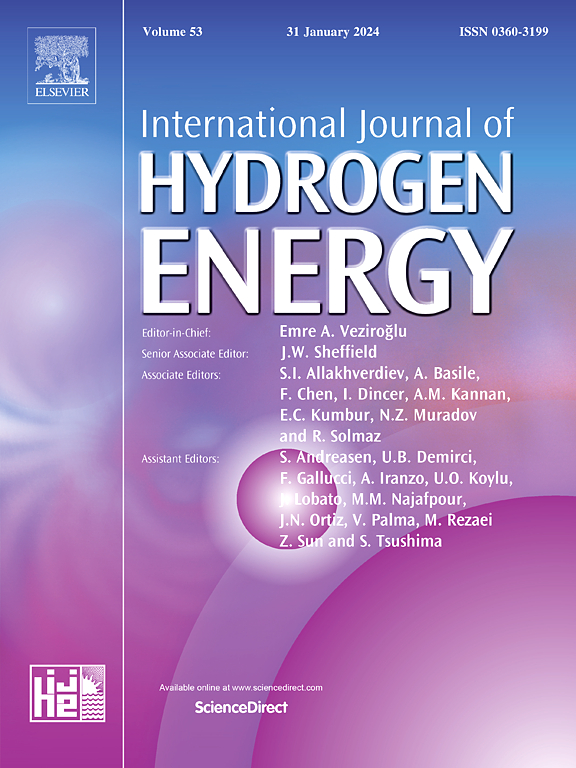可持续航空燃料的生产:原料和工厂产能对燃料价格的影响
IF 8.1
2区 工程技术
Q1 CHEMISTRY, PHYSICAL
引用次数: 0
摘要
本研究首先考察了使用绿色氢(H2)和二氧化碳(CO2)生产可持续航空燃料(SAF)的经济和技术可行性,然后在第二部分评估了甲醇制喷气的过程。以66千吨/年的H2和480千吨/年的CO2为原料,实现了55千吨/年的煤油生产。根据贴现现金流率模型,经济分析显示,平均运营成本(LCO)为8.17±5.25美元/公斤,显著高于欧洲传统航空燃油价格(0.46-1.77美元/公斤)。与其他研究一致,敏感性分析证实了H2价格对SAF成本的重大影响,因此有必要探索新的原料。在这方面,生物甲醇在20万吨/年至399万吨/年的规模经济中,平均LCO为0.72美元/公斤,前景广阔。尽管目前生物甲醇生产存在局限性,但研究结果强调需要具有成本效益的解决方案来为SAF提供足够的原料供应。本文章由计算机程序翻译,如有差异,请以英文原文为准。

Production of sustainable aviation fuel: Influence of feedstock and plant capacity on fuel price
This study investigates the economic and technical viability of producing Sustainable Aviation Fuels (SAF) using green hydrogen (H2) and carbon dioxide (CO2) first, before assessing the process of methanol-to-jet in the second part. Using 66 kt/year of H2 and 480 kt/year of CO2 as feedstock, a production of 55 kt/year of kerosene is achieved. Based on a Discounted Cash Flow Rate Model, the economic analysis reveals a Levelized Cost of Operations (LCO) of $8.17 ± 5.25/kg, significantly higher than the European conventional jet fuel price ($0.46–1.77/kg). Consistent with other research, a sensitivity analysis confirms the substantial impact of H2 price on SAF costs, necessitating exploring new feedstocks. In this regard, bio-methanol emerges as promising with a mean LCO of $0.72/kg for economies of scales between 200 kt/year and 399 kt/year. Despite current limitations in bio-methanol production, the findings underscore the need for cost-effective solutions to provide sufficient supply of feedstock for SAF.
求助全文
通过发布文献求助,成功后即可免费获取论文全文。
去求助
来源期刊

International Journal of Hydrogen Energy
工程技术-环境科学
CiteScore
13.50
自引率
25.00%
发文量
3502
审稿时长
60 days
期刊介绍:
The objective of the International Journal of Hydrogen Energy is to facilitate the exchange of new ideas, technological advancements, and research findings in the field of Hydrogen Energy among scientists and engineers worldwide. This journal showcases original research, both analytical and experimental, covering various aspects of Hydrogen Energy. These include production, storage, transmission, utilization, enabling technologies, environmental impact, economic considerations, and global perspectives on hydrogen and its carriers such as NH3, CH4, alcohols, etc.
The utilization aspect encompasses various methods such as thermochemical (combustion), photochemical, electrochemical (fuel cells), and nuclear conversion of hydrogen, hydrogen isotopes, and hydrogen carriers into thermal, mechanical, and electrical energies. The applications of these energies can be found in transportation (including aerospace), industrial, commercial, and residential sectors.
 求助内容:
求助内容: 应助结果提醒方式:
应助结果提醒方式:


